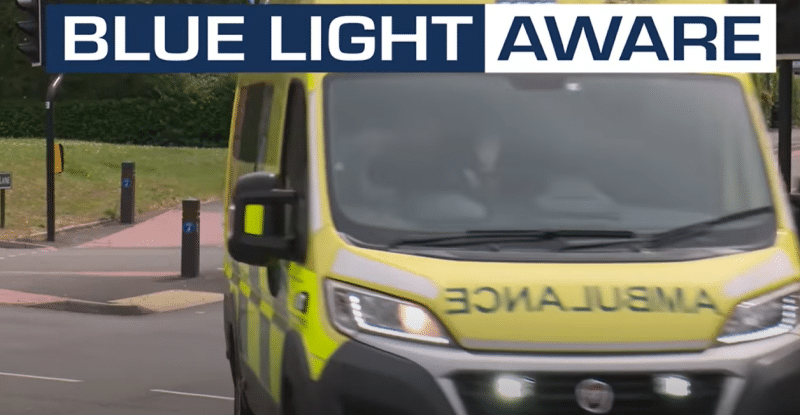Be Blue Light Aware
What to do and how to react on the road when you see blue lights
What to do and how to react on the road when you see blue lights
When you are driving and see an emergency vehicle with blue lights and sirens, do you know what to do? Many people are not sure what to do so Blue Light Aware aims to educate motorists on the best way to react when you see a vehicle with blue lights flashing.
The South East Coast of England that we serve is an extremely busy part of the country with the main M20 corridor transporting goods and people from the Ports and Channel Tunnel up to London and beyond.
With Ambulance, Fire and Police vehicles on the roads responding to emergencies day and night there is a very good chance that you’ll see a blue light vehicle on our roads every time you travel in your car.
There is some advice in the Highway Code about what to do when you see an emergency vehicle, but many drivers panic when they hear a siren or see blue lights coming and then make poor choices which can delay the response to those in need.
We are pleased to support the Blue Light Aware Campaign to highlight these dangers and to help motorists understand the best way to make sure that when you are driving that emergency vehicles can pass you easily and without delay.
Please take some time to watch the videos below and help us share this information on Social Media to keep you and your friends and family safe on the roads.
If you ever need the emergency services, you will want drivers to make way for them so they can get to you, so please help us help you by informing, educating and spreading the word.
 What should I do when there is an emergency vehicle behind me?
What should I do when there is an emergency vehicle behind me?
You should take action to let the emergency vehicle pass, but you must do so safely and legally. If you jump a red light to make space or enter a bus lane or a yellow box junction, you’ll be breaking the law and could be prosecuted.
The best thing to do, if you can and the space allows, is to move to the side of the road and come to a controlled stop. This should be done without putting any other road users or pedestrians at risk or committing any motoring offences.
Should I stop where I am?
This is rarely the best course of action, because emergency vehicles will then have to weave around you. You should try to manoeuvre towards the side of the road and then slow down to a stop. The exception is when there is a bus lane; leave this clear for the emergency vehicle to use.
Am I legally obliged to move over for emergency vehicles?
The Emergency Workers (Obstruction) Act 2006 states that it’s an offence to obstruct or hinder emergency services vehicles. However, that doesn’t mean you should commit a driving offence to do so. The Highway Code states that you should ‘consider the route of such a vehicle and take appropriate action to let it pass, while complying with all traffic signs’.
In other words, while you should look to let the emergency vehicle pass, you shouldn’t if the only way to do so is by breaking the law.
What does the Highway Code say?
Rule 219 of the Highway Code, which deals with emergency and incident support vehicles, states:
“You should look and listen for ambulances, fire engines, police, doctors or other emergency vehicles using flashing blue, red or green lights and sirens or flashing headlights, or traffic officer and incident support vehicles using flashing amber lights.
“When one approaches, do not panic. Consider the route of such a vehicle and take appropriate action to let it pass, while complying with all traffic signs. If necessary, pull to the side of the road and stop, but try to avoid stopping before the brow of a hill, a bend or narrow section of road.
“Do not endanger yourself, other road users or pedestrians and avoid mounting the kerb. Do not brake harshly on approach to a junction or roundabout, as a following vehicle may not have the same view as you.”
For more information on safe driving please visit the Blue Light Aware site and Highways England, for the latest tips and advice for motorists.